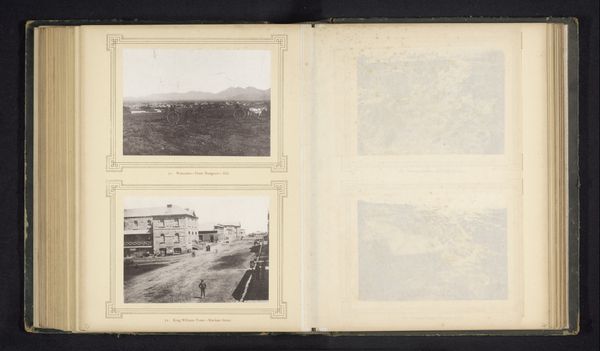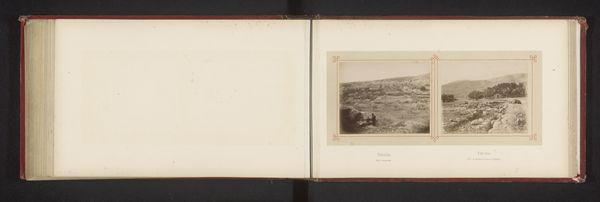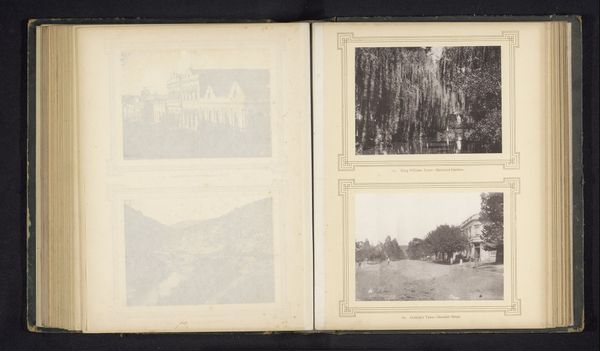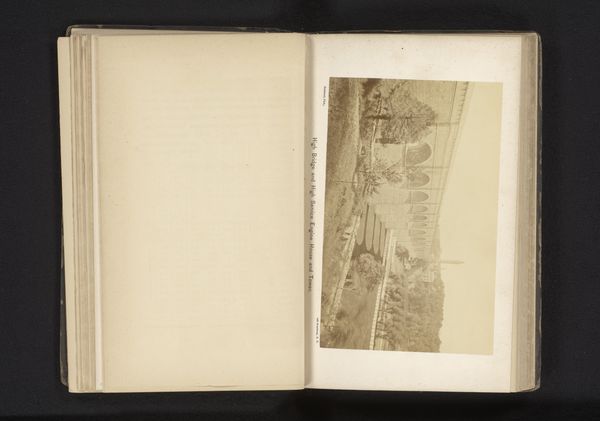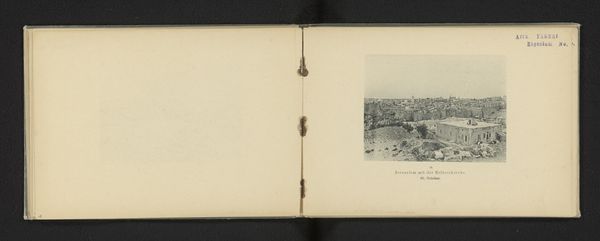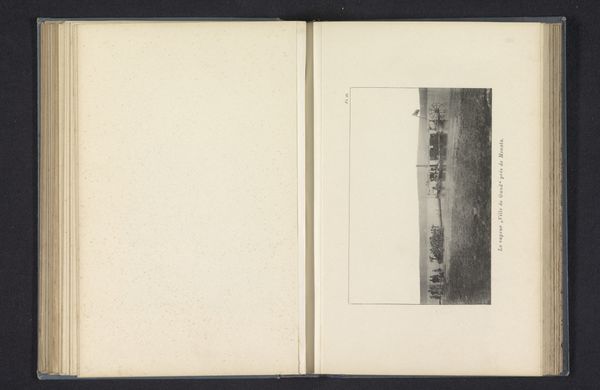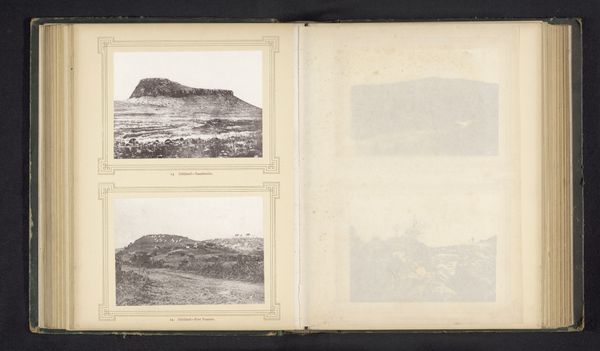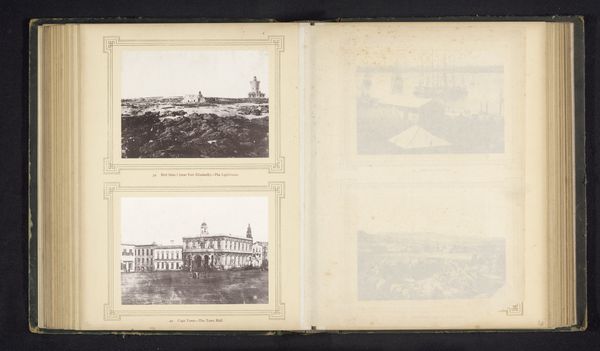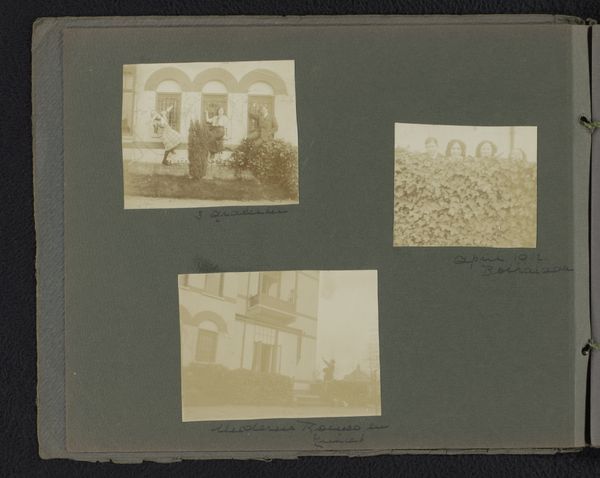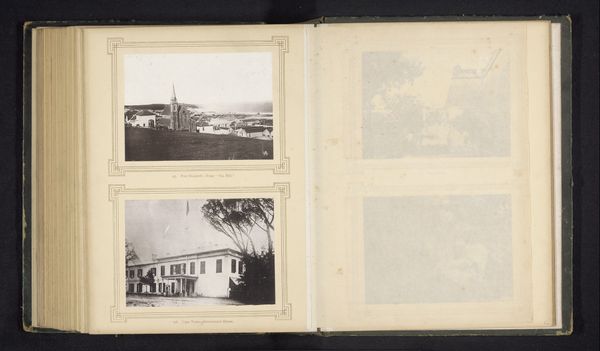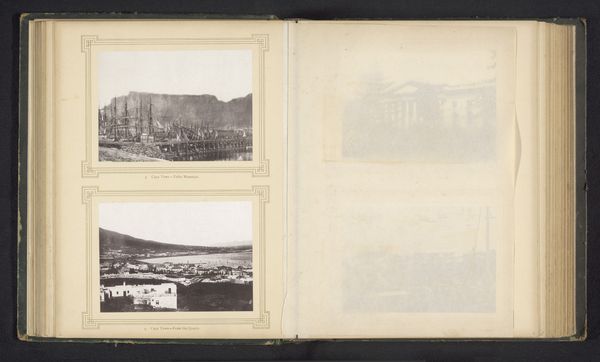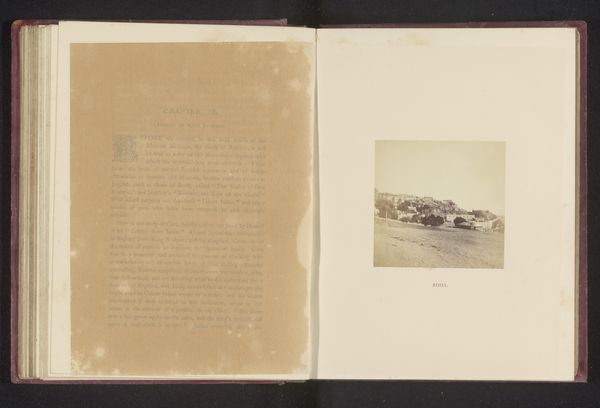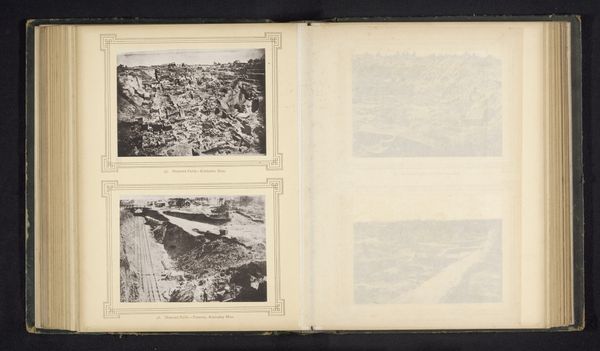![['Natal-Coffee plantation', 'Mozambique-Old church'] by Sam Alexander](/_next/image?url=https%3A%2F%2Fd2w8kbdekdi1gv.cloudfront.net%2FeyJidWNrZXQiOiAiYXJ0ZXJhLWltYWdlcy1idWNrZXQiLCAia2V5IjogImFydHdvcmtzLzA2YTY4NDU5LTlhOGEtNGMzYS04OTg0LTA3MWJiMTcyODU1ZC8wNmE2ODQ1OS05YThhLTRjM2EtODk4NC0wNzFiYjE3Mjg1NWRfZnVsbC5qcGciLCAiZWRpdHMiOiB7InJlc2l6ZSI6IHsid2lkdGgiOiAxOTIwLCAiaGVpZ2h0IjogMTkyMCwgImZpdCI6ICJpbnNpZGUifX19&w=3840&q=75)
print, photography, albumen-print, architecture
#
aged paper
#
homemade paper
#
paperlike
# print
#
landscape
#
paper texture
#
photography
#
thick font
#
white font
#
paper medium
#
albumen-print
#
architecture
#
historical font
#
columned text
#
small font
Dimensions: height 290 mm, width 219 mm
Copyright: Rijks Museum: Open Domain
Editor: This page from a pre-1880 photograph album presents views of "Natal-Coffee plantation" and "Mozambique-Old church," showcased through albumen prints. There's something undeniably nostalgic about the sepia tones and the visible paper texture. What story do you think these images are trying to tell? Curator: Oh, this breathes history! To me, it’s not just about the places depicted but the act of documenting them. Early photography wasn't just snapping a pic; it was an expedition, a statement. That coffee plantation... the repetitive order of the plants, almost feels like an assertion of control over the landscape. Don't you feel it hints at colonial endeavors? Editor: I see what you mean! There's an inherent power dynamic captured even in a simple landscape. And the church, so stoic. I’m curious, what draws your eye first when you look at these kinds of historical photographs? Curator: The human element, or rather, its absence. Where are the people? Are they intentionally left out, or is it merely the limitation of early photographic techniques? It begs so many questions about perspective and representation. Did you notice the font used for captions; feels oddly assertive, don't you think? Editor: Absolutely, the contrast between the delicate images and that bold font is striking. It adds a layer of formality. I hadn't thought about the missing people until you pointed it out – now, I'm overflowing with even more questions. Curator: Isn't that the joy of art? Every answer breeds a dozen more questions. And old photos, like whispers from the past, invite us to listen closely and imagine what's not shown. Editor: This has completely changed how I look at photographs. I'm already itching to dig deeper into the colonial context and photographic techniques.
Comments
No comments
Be the first to comment and join the conversation on the ultimate creative platform.
